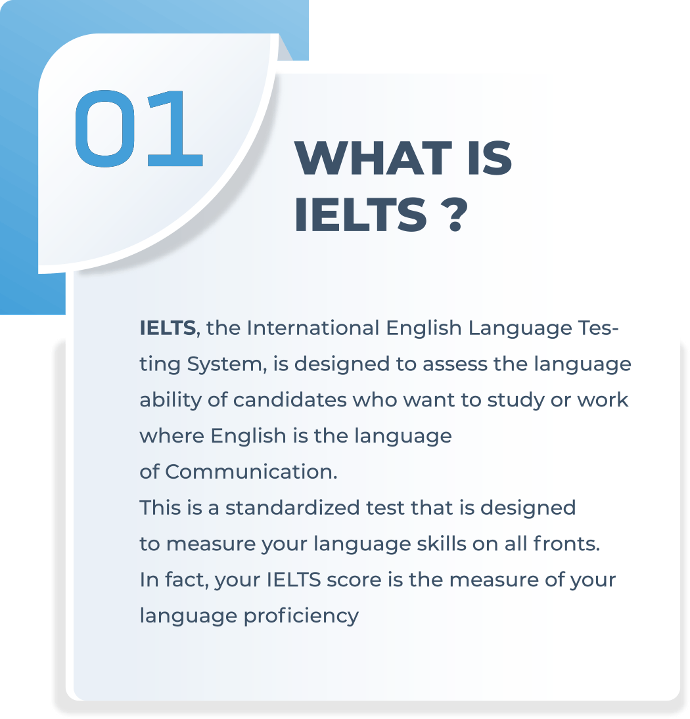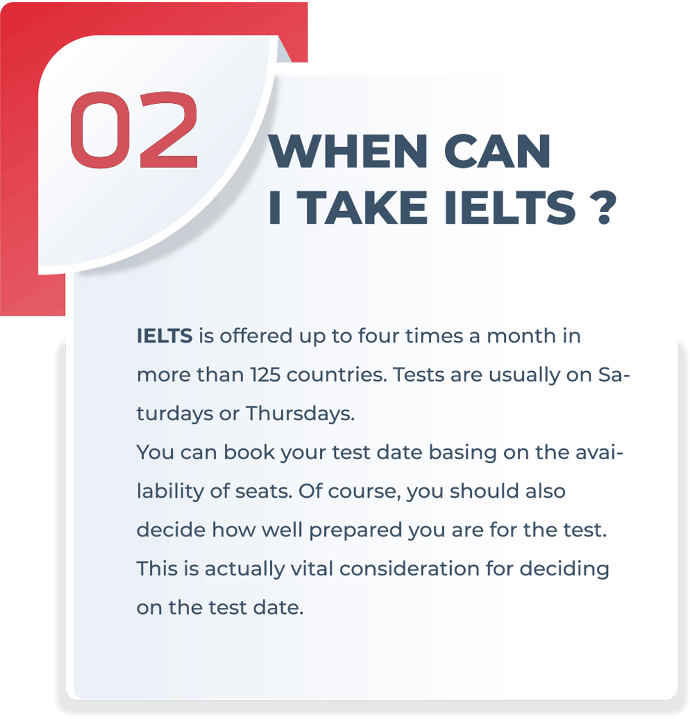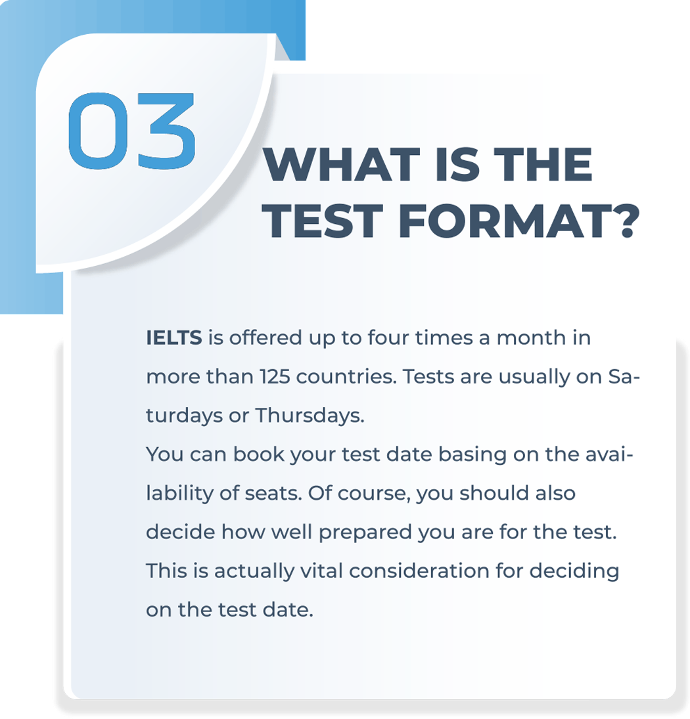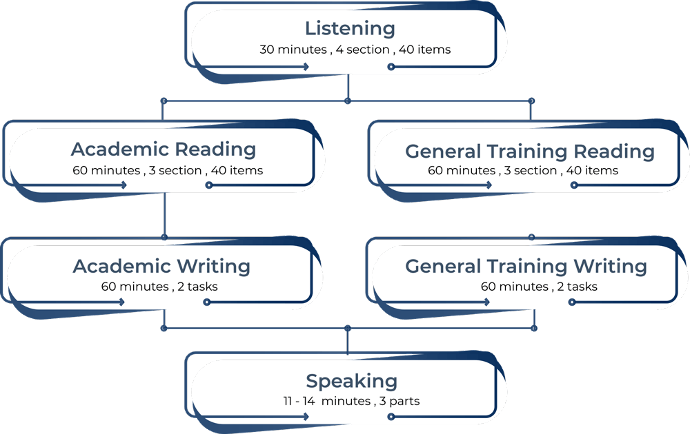
IELTS



WHAT IS THE DIFFERENCE BETWEEN
ACADEMIC MODULE AND GENERAL
TRAINING MODULE?
Both modules cover all four language skills – listening, reading, writing and speaking. Everyone takes the same Listening and Speaking tests. There are different Reading and Writing tests for the Academic and General Training modules.
The Listening, Reading and Writing tests must be completed on the same day. There are no breaks between the three written tests. The Speaking test may be taken up to seven days before or after the other three tests.


Modules
There are 3 parts
Part 1. Introduction and interview (4-5 minutes)
The examiner introduces him/herself and asks the candidate to introduce him/herself and confirm his/her identity. The examiner asks the candidate general questions on familiar topics, e.g. home, family, work, studies and interests.
Part 2. Individual long turn (3-4 minutes)
The examiner gives the candidate a task card which asks the candidate to talk about a particular topic and which includes points which the candidate can cover in their talk. The candidate is given 1 minute to prepare their talk and is given a pencil and paper to make notes. The candidate talks for 1-2 minutes on the topic. The examiner then asks the candidate one or two questions on the same topic.
Part 3. Two-way discussion (4-5 minutes)
The examiner asks further questions which are connected to the topic of Part 2. These questions give the candidate an opportunity to discuss more abstract issues and ideas.
Timing: Approximately 30 minutes (plus 10 minutes’ transfer time) Questions: There are 40 questions A variety of question types is used, chosen from the following: multiple choice, matching, plan/map/diagram labelling, form completion, note completion, table completion, flowchart completion, summary completion, sentence completion, short-answer questions. IELTS is internationally focused in its content. For example, a range of native-speaker accents (North American, Australian, New Zealand, and British) is used in the Listening test, and all standard varieties of English are accepted in candidates’ responses in all parts of the test.
Timing: 60 minutes (no extra transfer time) Questions: There are 40 questions. A variety of question types is used, chosen from the following: multiple choice, identifying information (True/False/Not Given), identifying writer’s views/claims (Yes/No/Not Given), matching information, matching headings, matching features, matching sentence ending, sentence completion, summary completion, flowchart completion and short answer questions.
Test Parts: There are 3 sections. The total text length is 2,150 - 2,750 words.
Each section contains one long text. Texts are authentic and are taken from books, journals, magazines and newspapers. They have been written for a non-specialist audience and are on academic topics of general interest. Texts are appropriate to, and accessible to, candidates entering undergraduate or postgraduate courses or seeking professional registration. Texts range from the descriptive and factual to the discursive and analytical. Texts may contain non-verbal materials such as diagrams, graphs or illustrations. If texts contain technical terms, then a simple glossary is provided.
Timing: 60 minutes
Tasks: There are 2 tasks.
Candidates are required to write at least 150 words for Task 1 and at least 250 words for Task 2.
In Task 1, candidates are presented with a graph, table, chart or diagram and are asked to describe, summarize or explain the information in their own words. They may be asked to describe and explain data, describe the stages of a process, how something works or describe an object or event.
In Task 2, candidates are asked to write an essay in response to a point of view, argument or problem. The issues raised are of general interest to, suitable for and easily understood by candidates entering undergraduate or postgraduate studies or seeking professional registration.
Responses to Task 1 and Task 2 should be written in a formal style.
In Task 1, candidates are presented with a situation and are asked to write a letter requesting information or explaining the situation. The letter may be personal, semi-formal or formal in style.
In Task 2, candidates are asked to write an essay in response to a point of view, argument or problem. The essay can be slightly more personal in style than the Academic Writing Task 2 essay Topics are of general interest.
Speaking
Timing: 11-14 minutes
Tasks:
The Speaking test is a 3-part face-to-face oral interview with an examiner.
The Speaking test is recorded